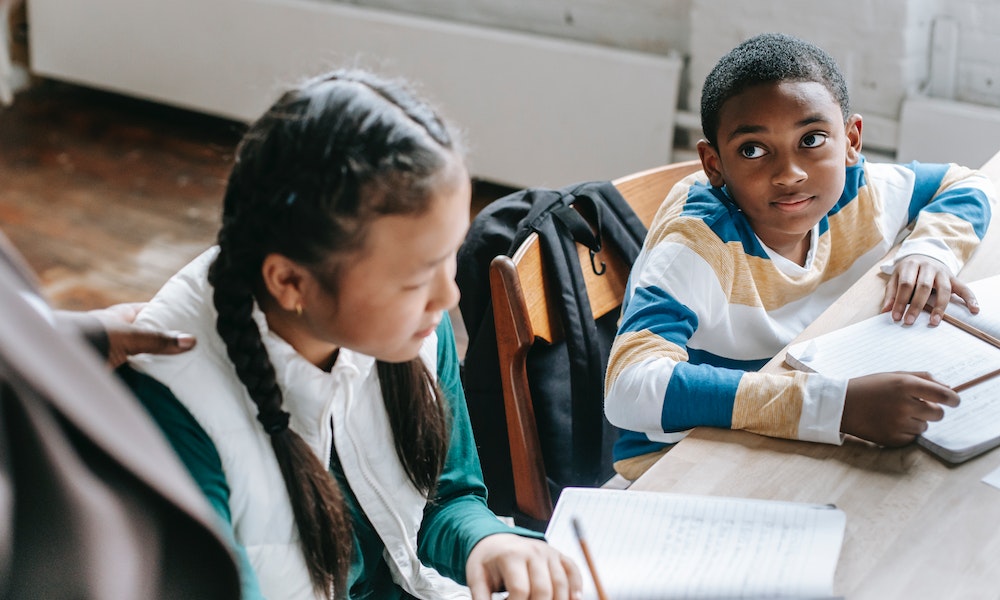Teacher-Student Relationships, The integration of educational technology, or EdTech, in classrooms, has transformed the way teachers and students interact. With the advancement of digital tools and resources, the traditional teacher-student relationship has evolved, creating new opportunities and challenges. In this article, we will explore the five important impacts of EdTech on teacher-student relationships and how they shape the learning experience.
In the digital age, educational technology has revolutionized teaching and learning. EdTech encompasses various digital tools, software, and platforms designed to enhance the educational experience. As technology becomes an integral part of education, it significantly impacts the dynamics between teachers and students.
Read More: 7 Best Points Of EdTech in Promoting Creativity and Innovation
Explore the Contents
- 0.1 Increased Communication and Collaboration
- 0.2 Enhanced Accessibility and Inclusivity
- 0.3 Empowering Teacher-Student Bond
- 0.4 Overcoming Physical Barriers
- 0.5 Strengthening Student Engagement
- 0.6 Promoting Independent Learning
- 0.7 Preparing Students for Future Careers
- 1 Teacher-Student Relationships, Conclusion
- 2 FAQs
Increased Communication and Collaboration
Teacher-Student Relationships, EdTech provides channels for seamless communication and collaboration between teachers and students. Online platforms, discussion forums, and messaging apps enable real-time interactions, allowing students to seek clarification and engage in meaningful discussions beyond the confines of the classroom. This fosters a stronger sense of connectivity and facilitates continuous learning.
One of the significant impacts of EdTech is the ability to personalize the learning experience for each student. With adaptive learning platforms, students can progress at their own pace, focusing on their individual strengths and weaknesses. Personalized feedback and tailored resources enable teachers to provide targeted support, fostering a deeper understanding of the subject matter.

Enhanced Accessibility and Inclusivity
Teacher-Student Relationships, EdTech has brought education to individuals who may have previously faced barriers due to physical limitations, geographical constraints, or learning disabilities. Online learning platforms, multimedia resources, and assistive technologies ensure that students with diverse needs can access educational content and participate actively. This inclusivity promotes equal opportunities for all learners.
Through EdTech, teachers can provide timely and constructive feedback to students. Digital tools enable the efficient assessment of assignments, quizzes, and exams, allowing teachers to track progress and identify areas for improvement. With automated grading systems, teachers can focus more on providing personalized feedback, helping students grow academically.
Empowering Teacher-Student Bond
Teacher-Student Relationships, EdTech strengthens the teacher-student bond by creating a collaborative and supportive environment. Teachers can easily monitor individual student progress, identify challenges, and provide tailored guidance. Students, in turn, feel more connected and empowered, as they receive personalized attention and support from their teachers.
The integration of EdTech equips students with essential 21st-century skills such as digital literacy, critical thinking, and problem-solving. Through interactive learning platforms, students engage in activities that require them to analyze, evaluate, and apply knowledge. This prepares them to thrive in a rapidly evolving digital world.
Overcoming Physical Barriers
Teacher-Student Relationships, EdTech eliminates physical barriers by transcending geographical boundaries. Students can engage in virtual classrooms, collaborate with peers from different parts of the world, and access educational resources remotely. This broadens their horizons and exposes them to diverse perspectives, enhancing their overall learning experience.
Every student has a unique learning style, and EdTech caters to diverse learning preferences. Visual learners can benefit from interactive videos and graphics, while auditory learners can access audio-based resources. Kinesthetic learners can engage with hands-on simulations and virtual experiments. EdTech ensures that teaching methods are adaptable and cater to the individual needs of each student.

Strengthening Student Engagement
Teacher-Student Relationships, EdTech facilitates active learning by incorporating gamification elements and interactive content. Students are more engaged when they can interact with the material, solve problems, and receive immediate feedback. This increased engagement leads to better retention and deeper understanding of the subject matter.
The integration of EdTech encourages students to think critically and creatively. Through multimedia presentations, project-based learning, and virtual simulations, students can explore ideas, solve complex problems, and express their creativity. This fosters a culture of innovation and prepares students for the challenges of the future.
Promoting Independent Learning
Teacher-Student Relationships, EdTech empowers students to take ownership of their learning journey. With access to a wealth of online resources, students can explore topics of interest, conduct research, and pursue self-directed learning. This independence nurtures a lifelong love for learning and equips students with the skills needed for continuous personal and professional growth.
EdTech facilitates peer collaboration and cooperation, fostering a supportive learning environment. Virtual group projects, online discussion boards, and collaborative document editing encourage students to work together, share ideas, and provide constructive feedback. This sense of community strengthens relationships among students and enhances their overall educational experience.
Preparing Students for Future Careers
Teacher-Student Relationships, In a technology-driven world, proficiency in using digital tools and navigating online platforms is crucial for future career success. By integrating EdTech into the learning process, teachers equip students with the skills and knowledge needed to thrive in a digital workplace. This prepares them for a wide range of professions and ensures they are well-prepared for the demands of the modern job market.

Teacher-Student Relationships, Conclusion
The integration of EdTech has revolutionized teacher-student relationships, transforming the learning experience for both parties. Increased communication, personalized learning, enhanced accessibility, and effective feedback are just a few of the many benefits. As technology continues to evolve, educators must adapt and harness the power of EdTech to create a conducive and engaging learning environment for students.
Read More: 7 Important Roles of EdTech in promoting social justice education
FAQs
Q1. Can EdTech completely replace traditional teaching methods?
No, EdTech should complement traditional teaching methods rather than replacing them. It serves as a valuable tool to enhance the learning experience and support the teacher-student relationship.
Q2. Are there any potential drawbacks of EdTech in the classroom?
While EdTech offers numerous benefits, there can be challenges such as technological glitches, distractions, and the need for adequate teacher training. These issues can be overcome with proper planning and implementation.
Q3. How can teachers ensure the privacy and security of student data when using EdTech?
Teachers should select reputable and secure EdTech platforms that prioritize data privacy. Additionally, they should adhere to privacy regulations and educate students about online safety and responsible use of technology.
Q4. How can teachers integrate EdTech effectively in their classrooms?
Teachers should undergo proper training to effectively integrate EdTech tools into their teaching practices. They should also regularly evaluate the impact of EdTech on student learning and make necessary adjustments.
Q5. What is the future of EdTech in education?
The future of EdTech looks promising, with advancements in artificial intelligence, virtual reality, and augmented reality. These technologies have the potential to further enhance the teacher-student relationship and create immersive learning experiences.


